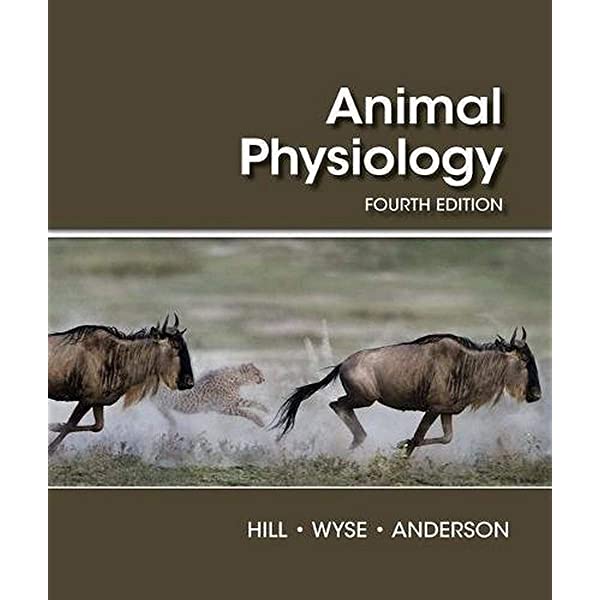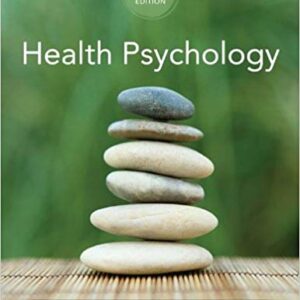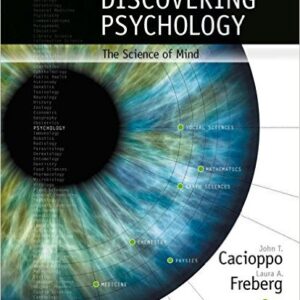Test bank for Animal Physiology 4th Edition By Hill
Chapter 1: Animals and Environments: Function on the Ecological Stage
TEST BANK QUESTIONS
Multiple Choice
1. Which statement about the discipline of physiology is false?
a. It is a key discipline for understanding how animals change over Earth’s history.
b. It is a key discipline for understanding the fundamental biology of all animals.
c. It is a key discipline for understanding human health and disease.
d. It is a key discipline for understanding the health and disease of nonhuman animals.
Answer: a
Textbook Reference: The Importance of Physiology
Bloom’s Category: 5. Evaluating
2. To understand how a fish propels itself by applying forces to the water, physiologists
would study its
a. biomechanics.
b. evolution.
c. ecology.
d. cell physiology.
Answer: a
Textbook Reference: The Highly Integrative Nature of Physiology
Bloom’s Category: 2. Understanding
3. The data in the graph below would be relevant to which subdiscipline of physiology?© 2016 Sinauer Associates, Inc.
a. Evolution
b. Cell physiology
c. Morphology
d. Ecology
Answer: d
Textbook Reference: The Highly Integrative Nature of Physiology
Bloom’s Category: 2. Understanding
4. In the study of physiology, the term “_______” refers to the components of living
animals and the interactions among those components that enable animals to perform as
they do.
a. feedback
b. regulation
c. natural selection
d. mechanism
Answer: d
Textbook Reference: Mechanism and Origin: Physiology’s Two Central Questions
Bloom’s Category: 1. Remembering
5. How is the light reaction in the firefly inhibited?
a. Mitochondria prevent oxygen from reacting with luciferyl-AMP.
b. Nitric oxide combines with oxygen to prevent reaction with luciferyl-AMP.
c. ATP is prevented from combining with luciferin.
d. Luciferase is prevented from catalyzing the reaction.
Answer: a
Textbook Reference: Mechanism and Origin: Physiology’s Two Central Questions
Bloom’s Category: 2. Understanding
6. Which of the following is not needed in the mechanism of light production in the
firefly?
a. Oxygen
b. ATP
c. Light
d. Luciferin
Answer: c
Textbook Reference: Mechanism and Origin: Physiology’s Two Central Questions
Bloom’s Category: 2. Understanding
7. In the firefly, light is emitted when
a. ATP combines with luciferin, forming lucifer-AMP.
b. released nitric oxide blocks the mitochondria’s use of oxygen.
c. the electron-excited product of O2 and luciferyl-AMP returns to its ground state.
d. luciferase is activated by oxygen.
Answer: c
Textbook Reference: Mechanism and Origin: Physiology’s Two Central Questions© 2016 Sinauer Associates, Inc.
Bloom’s Category: 5. Evaluating
8. Which of the following is considered the “on” switch for the light-emitting reaction of
the firefly?
a. Oxygen
b. Luciferase
c. Nitric oxide
d. ATP
Answer: c
Textbook Reference: Mechanism and Origin: Physiology’s Two Central Questions
Bloom’s Category: 3. Applying
9. A physiological mechanism or other trait that is a product of evolution and is
advantageous is called
a. an adaptation.
b. natural selection.
c. adaptive significance.
d. evolution.
Answer: a
Textbook Reference: Mechanism and Origin: Physiology’s Two Central Questions
Bloom’s Category: 1. Remembering
10. What is the adaptive significance of light emission in the firefly?
a. Female fireflies emit light in such a way that distinguishes their species.
b. All fireflies emit light to lure prey.
c. Male fireflies emit light to attract mates.
d. Male fireflies emit light to evade predators.
Answer: c
Textbook Reference: Mechanism and Origin: Physiology’s Two Central Questions
Bloom’s Category: 2. Understanding
11. Which of the following is a similarity between an octopus and a fish?
a. The evolutionary adaptation of excellent vision
b. The mechanism of vision
c. The processing of visual signals before reaching the optic nerve
d. The neuroanatomy of the eye
Answer: a
Textbook Reference: Mechanism and Origin: Physiology’s Two Central Questions
Bloom’s Category: 5. Evaluating
12. Research in the field of _______ physiology emphasizes synthesis across levels of
biological organization.
a. evolutionary
b. comparative
c. environmental
d. integrative © 2016 Sinauer Associates, Inc.
Answer: d
Textbook Reference: This Book’s Approach to Physiology
Bloom’s Category: 2. Understanding
13. Which statement regarding animals is true?
a. There is no distinction between an animal and its environment.
b. Once adults, animals are structurally static.
c. All animals require energy to maintain their organization.
d. Body size is significant in the lives of only small animals.
Answer: c
Textbook Reference: Animals
Bloom’s Category: 5. Evaluating
14. Most cells of an animal
a. are exposed to the external environment.
b. are exposed to the internal environment.
c. fluctuate between exposure to the external environment and the internal environment.
d. turn over while being exposed to the internal environment.
Answer: b
Textbook Reference: Animals
Bloom’s Category: 2. Understanding
15.–17. Refer to the figures below.
15. Which figure refers to a physiological trait that is regulated by an organism?© 2016 Sinauer Associates, Inc.
a. I
b. II
c. III
d. IV
Answer: b
Textbook Reference: Animals
Bloom’s Category: 3. Applying
16. A migrating salmon regulates its internal Cl–
concentration, shown in figure _______,
while conforming to water temperature, shown in figure _______.
a. I; II
b. II; I
c. II; IV
d. I; III
Answer: b
Textbook Reference: Animals
Bloom’s Category: 4. Analyzing
17. Figure _______ shows an animal’s regulation of its body temperature as the external temperature increases. Figure _______ shows no regulation of its body temperature as
external temperature increases.
a. I; II
b. II; I
c. II; IV
d. II; III
Answer: b
Textbook Reference: Animals
Bloom’s Category: 3. Applying
18. Which statement regarding physiological conformity and regulation is true?
a. All animals will eventually conform.
b. Animals are either regulators or conformers.
c. An animal cannot be both an ion regulator and a temperature conformer.
d. Conforming is more metabolically expensive than regulating.
Answer: a
Textbook Reference: Animals
Bloom’s Category: 5. Evaluating
19. The functioning of regulatory mechanisms that automatically make adjustments to
maintain internal constancy is called
a. conformity.
b. feedback.
c. homeostasis.
d. regulation.
Answer: c
Textbook Ref




